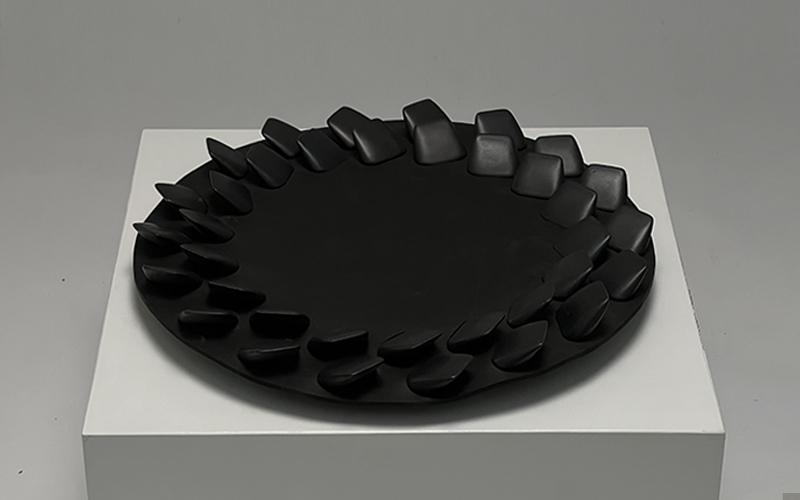Bernice Schütte Rubber Ceramic Centerpiece
€ 1250
This unique contemporary ceramic artwork by Dutch artist Bernice Schütte combines black rubber and cast ceramic in an innovative design. Originally created as a table centerpiece, the piece also functions beautifully as a wall-mounted sculpture, making it a versatile addition to both modern interior spaces and curated art collections.
The work features a circular rubber base inlaid with carefully arranged cast ceramic elements. These geometric ceramic forms, slightly angled and rhythmically positioned, create a sense of movement and texture across the surface. The contrast between the soft matte quality of the rubber and the smooth, solid ceramic components highlights Schütte’s interest in material tension and structural harmony.
Signed and dated BS ’95 on the reverse, this piece is number 3 from a limited edition of 10. It exemplifies Schütte’s exploration of repetition, form, and the intersection between functional object and sculptural art.
Ideal for collectors of modern ceramics, mixed media design, and minimalist sculpture, this work reflects a distinctive voice in late 20th-century Dutch ceramic art.
About the Artist
Bernice Schütte (Netherlands) is known for her experimental approach to ceramics, often incorporating industrial materials such as rubber and metal into her work. She studied at the Gerrit Rietveld Academie in Amsterdam and has exhibited both nationally and internationally. Her practice focuses on the boundaries between design and sculpture, with a particular emphasis on repetition, modular forms, and tactile contrast. Schütte’s work is held in several private and public collections and continues to influence contemporary ceramic discourse.
Bernice Schütte (Netherlands) is known for her experimental approach to ceramics, often incorporating industrial materials such as rubber and metal into her work. She studied at the Gerrit Rietveld Academie in Amsterdam and has exhibited both nationally and internationally. Her practice focuses on the boundaries between design and sculpture, with a particular emphasis on repetition, modular forms, and tactile contrast. Schütte’s work is held in several private and public collections and continues to influence contemporary ceramic discourse.



